Life Aquatic
Paintings of swimmers underwater, from an ongoing series that pays homage to summers spent sinking and floating in the lakes of Minnesota.
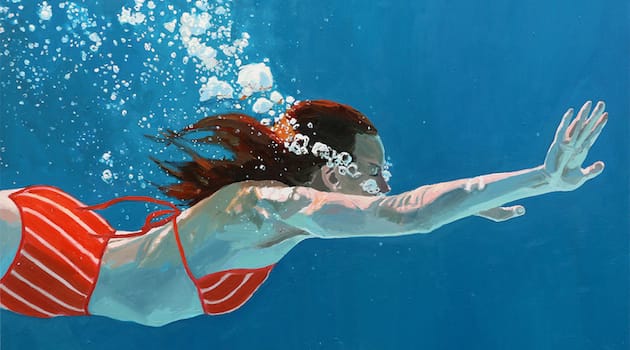
Interview by Karolle Rabarison
The Morning News: You’ve been painting swimmers for about a decade. How has your approach changed since you first began?
Samantha French: My early work was slightly more ethereal and less structured than it is now, but the progression was organic. I was using a lot of found imagery—vintage bathers, old family photos—and imagination mixed with studio shots. I started taking photos of people swimming from above. I bought an underwater case for my camera not long after moving to New York, which really transformed the work into what you see today. Continue reading ↓
Recent paintings are on view through March 1, 2014, in the solo exhibition “Life Aquatic” at Minneapolis’s Groveland Gallery. All images used with permission, all rights reserved, copyright © the artist.
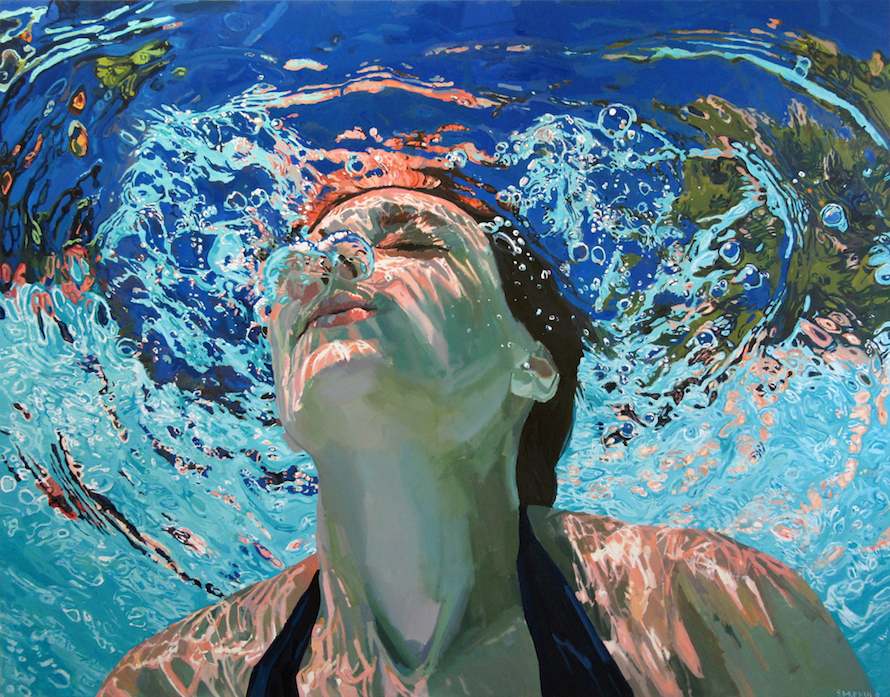
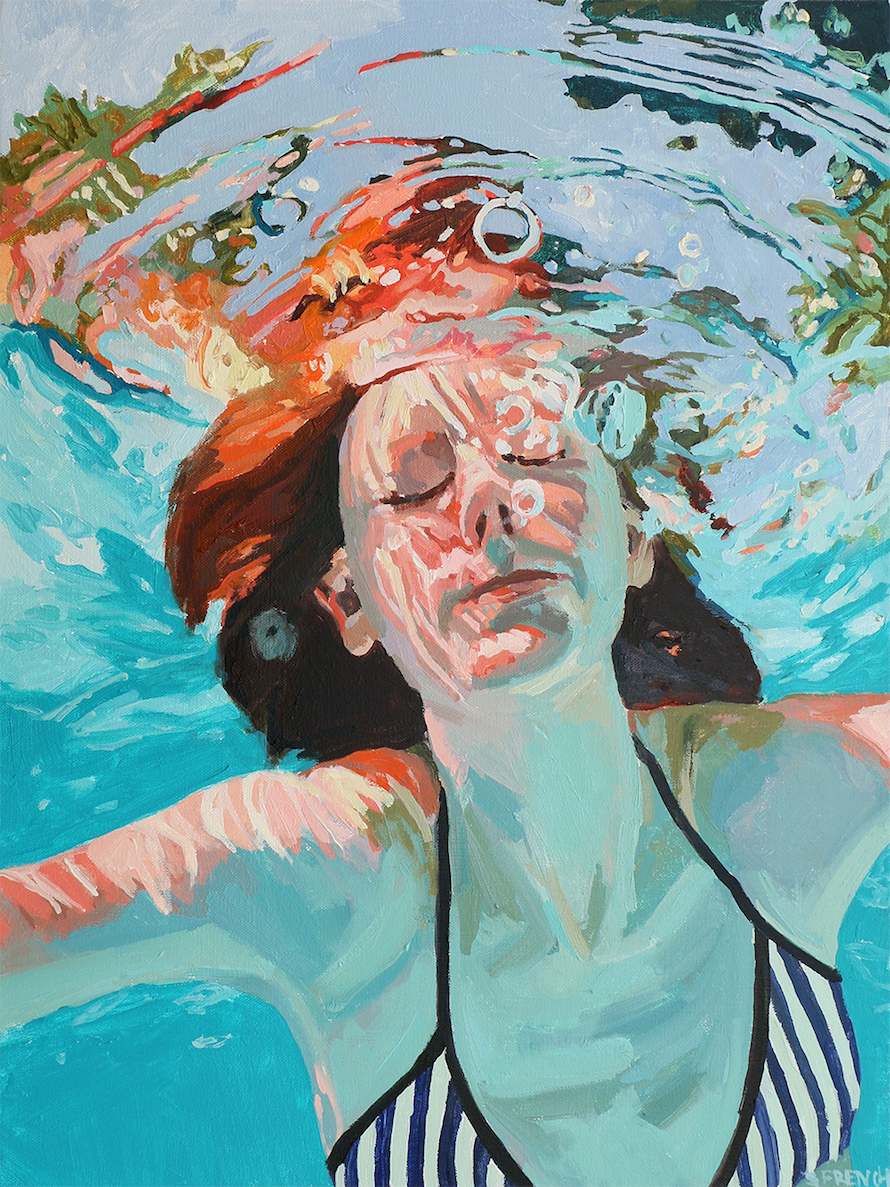
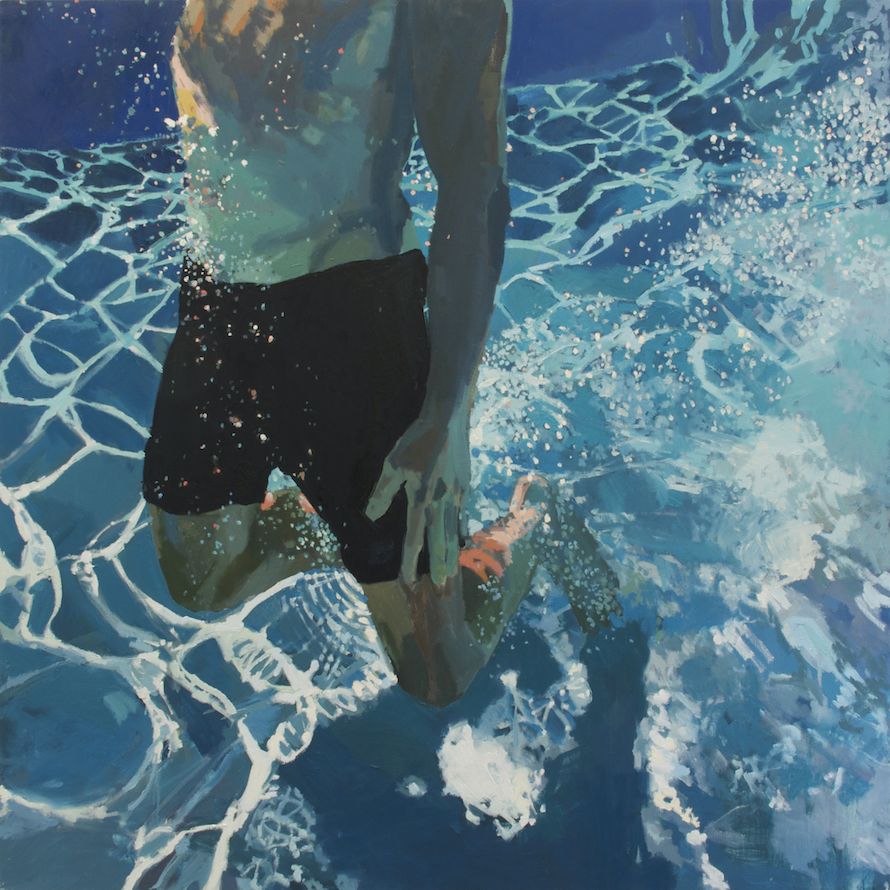
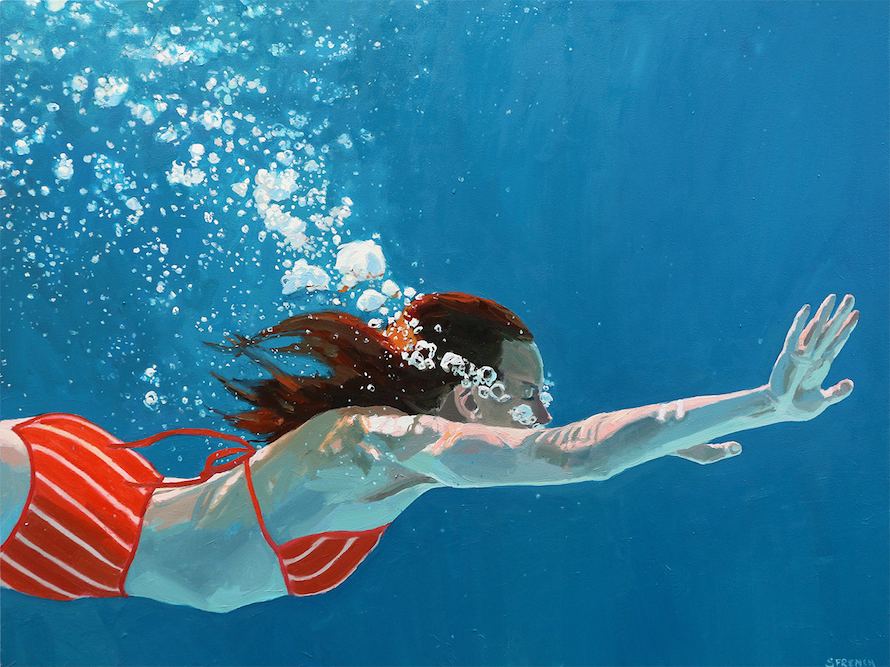
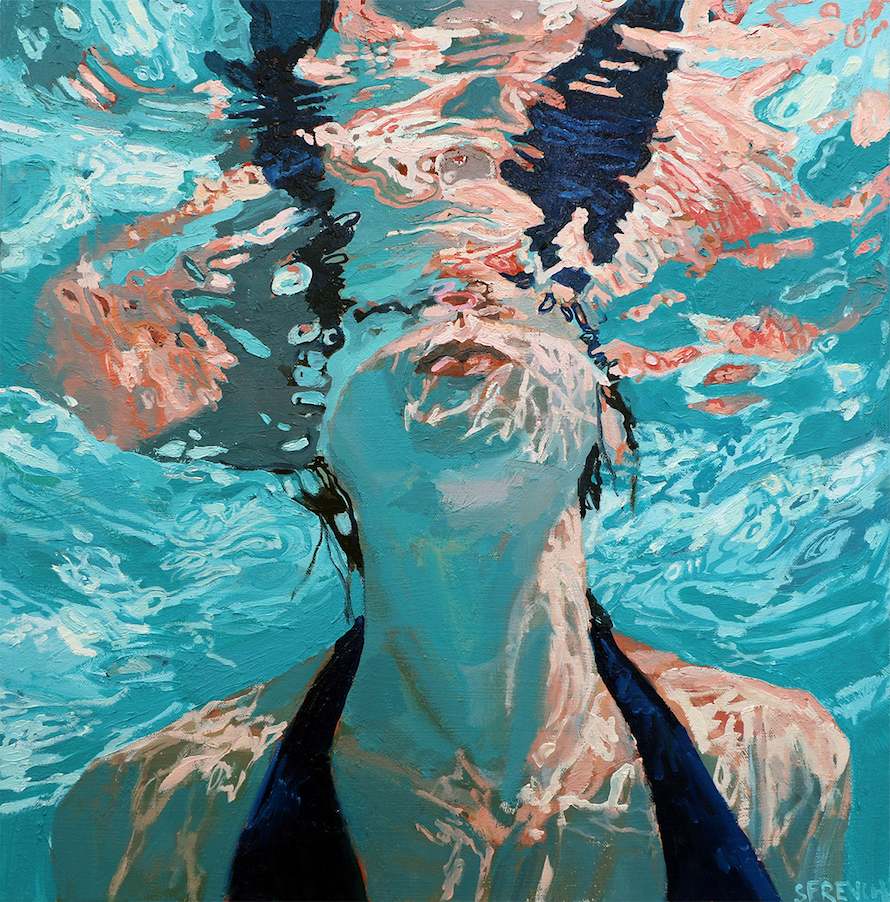
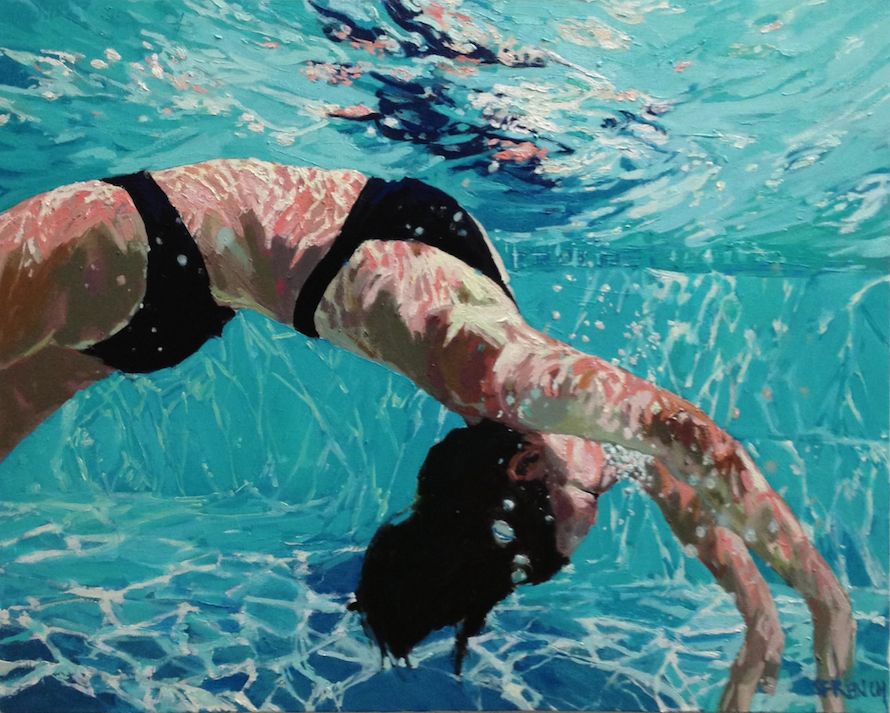
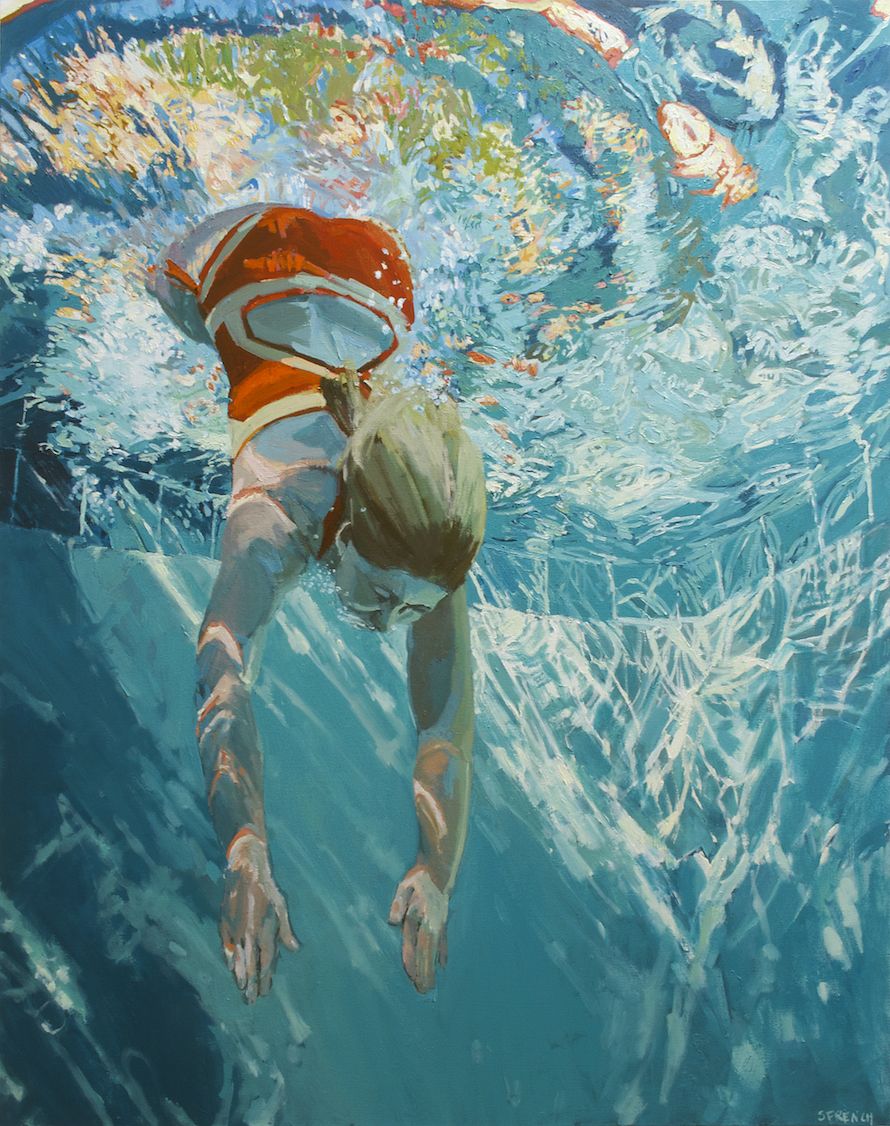
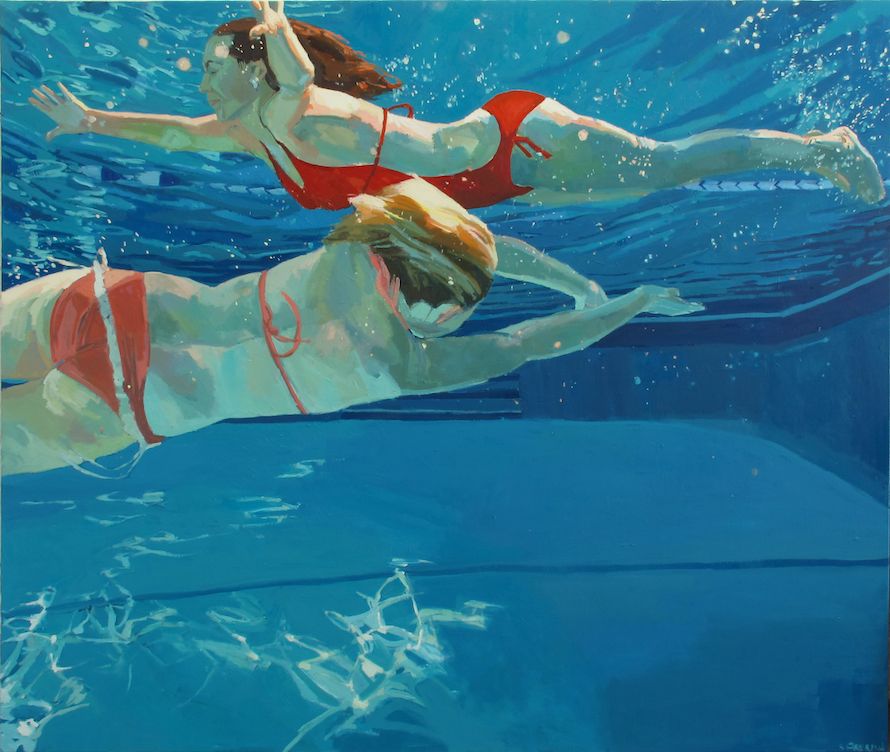
Interview continued
TMN: The images in your paintings today originate from thousands of photos. Talk us through the process of taking and sorting through them.
SF: I like to spend at least a couple of days doing photo shoots and do them periodically throughout the year, especially if I’m not familiar with the pool or lake. The light plays a big factor in photo quality, and there is a lot of repetition in trying to get shots of moving subjects. My partner Aaron, who is also a painter, helps with the photos quite a bit. When I first started, he and I were the only subjects. By now he knows exactly what I want, and we work well together. We’ve spent a lot of time in freezing pools trying to get the right shots.
Once I go through the first day’s photos, I know what I need to get the next day. But since it’s dependent on a lot of factors I can’t control—sunlight, water clarity, etc.—I take thousands. Back in the studio, I cull through everything, slowly paring down images, but I save them all and typically find exciting things years later that I wasn’t interested in working with at the time. Eventually I get to the point where I’m manipulating the photos and taking aspects from two or three to create the image that will eventually be the painting. And then, they are just a starting point. Even with all the work I do to get the image, I’m OK abandoning it once I start painting on the canvas.
TMN: What was the first artwork you ever sold?
SF: A small metal sculpture at the MCAD’s (Minneapolis College of Art and Design) annual art sale. It was thrilling. It was my first semester in college, and it meant a lot to me that someone would pay money for the things I made. I still hold the record for highest sales while participating in the art sale, and it was a big stepping-stone in my having the financial ability to move to New York and be a full-time painter.
TMN: Now that you’ve settled in New York, far from the water and nature you associate with home, where do you go to cure nature deficiency?
SF: I make it back to Minnesota quite often, especially in the summer, but getting out of the city regularly is a definite necessity for my sanity and me. We have a car and two dogs, so we get to parks a lot, but there is nothing like being alone on the lake in the middle of the woods. I feel like New Yorkers learn to find small moments of nature and quiet in their everyday lives. You can watch the sunset over the New York skyline from our back window, and sometimes that’s enough for me.
TMN: What surprises you about art?
SF: The process is always different. Making every piece feels different. I’ll go into something thinking I know what I want out of it, but I’m always reacting to what is happening on the canvas.
I’ve been asked a lot if I’ll continue painting water. There is so much more I want to do with it. I have more ideas for paintings than I’ll ever have time. I still find them to be challenging and exciting. When that stops, I’ll move on.
TMN: When you finish a piece, do you feel pride or relief?
SF: Once a painting is finished, I feel slightly disconnected from it. As if I didn’t make it. I do feel a lot of pride when I’m done with a painting, but it fades and I feel like I need to keep making work to keep experiencing it. I guess that’s probably why, even though it can be extremely stressful and isolating as a profession, I have this certain need to keep painting.
